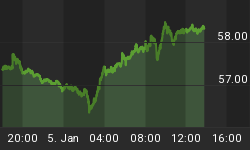Adapting to Systemic Dysfunction (part III)
In part one of this series, we sought to align attributes of the trading and investment process with those of gambling and speculation. We further posited that trading amidst unpredictable and sudden market swings was no different now than it has been throughout any other period in market history.
In part II, we explored how we chart a course in real time, and revealed precisely where we believe the Dow resides in Elliott Wave terms.
In part-III, we will explore the analysts (optional) role in providing contextual guidance relative to specific trading and investment objectives commonly held by those trading from the information contained in such works.
Trader or Analyst
Technical analysis and charting is one branch of market discipline, while the actual trading and money management resulting from such efforts requires a distinctly separate set of skills. It is the gray area between the two where most run into trouble.
Simply coupling the disciplines of technical analysis and trade management would appear to be the most rational approach in addressing this quandary. For most however, such an ideal marriage works in theory far better than it does in actual practice.
Do you want to be right, or do you want to make money.
The technical analysts' foremost directive is to be accurate and correct in framing the directional attributes of price action. In contrast, the traders' foremost concern is to earn a return, mitigate risk, and protect trading capital.
As such, analysts lean toward striving to "be right" about market direction, while traders simply wish to earn a positive return regardless of which forecast proves true and no matter what direction the market may pursue. Therein lays the rub. Do you have what it takes to master both disciplines concurrently in real time?
What are you odds of success?
Of the many who play college ball, few go on to the minors. Of the few who make it to the minors, even fewer get to play pro in the major leagues. Just as it is in professional sports, only a select few are able to acquire the broad range of versatile skills and disciplines to make it as traders.
Inherent talent or learned skills
Some would argue that such levels of acquired talent and discipline spawn from genetics, while others hold to the belief that such skills are learned. In our view, it is a combination of genetics in concert with learned disciplines, which separate the amateurs from the pros.
Yeah, it runs in the family
We were hoping to find a way in which to share how proud we are of one of our very own making it to the majors. This article is it. Here is proof of how far genetics coupled with learned disciplines can take someone.
Contextual Trading Guidelines
One of the many things that distinguish our brand of forecasting analytics from others is that we provide an explicit trading advisory component along with our chart analysis.
To do so effectively requires that we cover a range of varied strategies that align with common objectives relevant to a diverse group of loyal readers/listeners.
To cover all of the bases, we provide typical entry and exit signals based upon long-term, medium-term, near-term, and short-term levels of engagement.
In doing so, we provide a broad array of subscribers with a contextual framework which they can align or compare with their current trading objectives or positions.
Although we are chartists by trade, we opted to provide contextual trading guidance for those lacking a clear set of objectives and/or the disciplined trading strategies with which to achieve those objectives.
Many of our more experienced clients use the charting portion of our service to develop and execute their own strategies.
Those less experienced, or those simply wishing to follow proven strategies use the contextual advisory portion to assist in managing their discretionary trading efforts.
The combination of comprehensive charting coupled with contextual trading guidelines is a powerful one.
The above coupled with our new screen cast delivery format brings static price charts and written text into a completely new realm.
At present, we are still offering these powerhouse combination packages via our Near Term Outlook, and Position Traders Perspective.
New Line Up | on deck 2010
There are a substantial number of seasoned players wishing only to receive our chart-analytics.
It seems that this group does not have the interest or need to obtain contextual trading guidance.
On the other hand, there appears to be an equal number of people exclusively seeking various levels of general trading guidance, and care not if chart analytics' are included in such an offering.
In attempt to best accommodate all groups, in the coming months, we will separate the analytics side from trading side, making each available separately at a much lower entry point.
For those still wishing to maintain access to both the charting side and trade side of our services, nothing will change.
The new line up simply intends to provide a more reasonable point of entry for those simply wishing to have access to either the chart side or the trading side as a standalone service.
In part-IV, we will explore automating one's trading disciplines.
Until then,
Trade Better/Invest Smarter
















